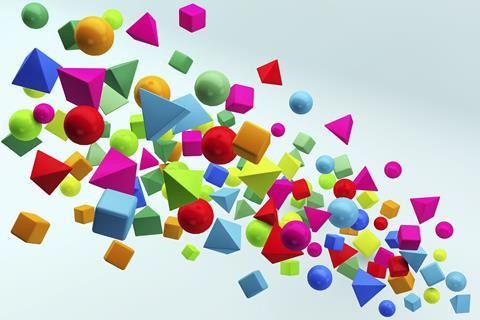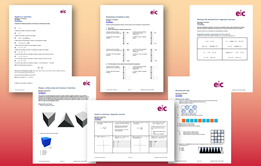Use these diagnostic questions and practice problems to boost knowledge of shapes, surface areas and volumes

Geometrical shapes are everywhere in chemistry. In pre-16 chemistry, students encounter various simple molecules, giant covalent structures – such as diamond and graphite – and buckyballs. An appreciation of polygons (2D shapes) and polyhedra (3D shapes) is essential to making sense of these molecular shapes, as well as explaining the properties of these compounds.
The diagnostic questions will help you find out what students already understand about geometry. You can use the practice problems, covering maths, algebra and chemistry, to boost students’ knowledge. The problems cover some of the geometrical concepts students use in chemistry and students can then apply the skills to molecular structures and rates of reaction.
Use this resource alongside the Education in Chemistry article, Working with 2D and 3D models.
Downloads
Shapes surface areas volumes diagnostic problems
Editable handout | Word, Size 0.52 mbShapes surface areas volumes diagnostic problems
Editable handout | PDF, Size 0.42 mbShapes surface areas volumes answers
Editable handout | Word, Size 0.55 mbShapes surface areas volumes answers
Editable handout | PDF, Size 0.46 mb
Maths skills for chemistry

Resources to help your students apply their maths knowledge in their chemistry lessons
- 1
- 2
- 3
- 4
- 5
 Currently
reading
Currently
reading
Improving students’ geometry skills
- 7































No comments yet